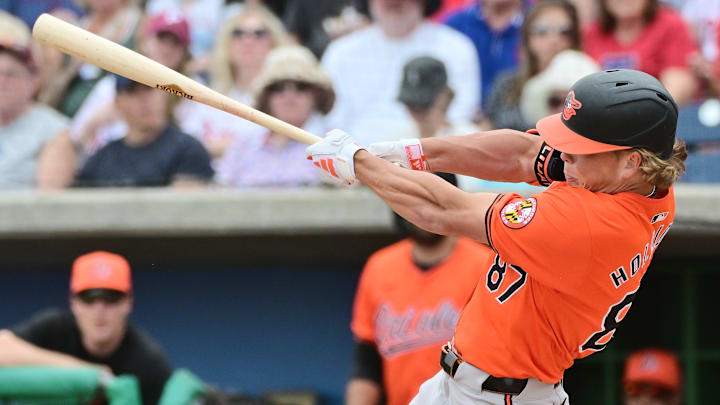A chance to lock up the young core
As successful organisations like Atlanta have shown, locking up an exciting young core in their pre-arbitration years by buying out not only their arbitration years, but some of the their potential free agent seasons as well, is becoming a template for how to build a dynasty. From signing 2023 NL MVP Ronald Acuña Jr. to an eight-year, $100 million contract in 2019 when he was just 21 years old, to extending current ace Spencer Strider to a seven-year deal worth up to $92 million following his rookie season in 2022 ahead of his 24th birthday, the Braves have been at the forefront of this revolution.
Teams like Milwaukee and Kansas City have been replicating that model with big pre-arbitration deals, like the record contract for a player before his MLB debut with Jackson Chourio's eight-year, $82 million guaranteed deal before his 20th birthday, and 23-year-old Bobby Witt Jr.’s guaranteed 11-year, $288 million extension. Corbin Carroll signed an eight-year, $111 million extension after only 32 games with the Diamondbacks when he was just 22 years old.
It can also go the wrong way, like with the division rival Blue Jays. Despite thefifth highest projected MLB payroll for 2024 at $223 million, they still haven’t signed either of the members of their homegrown core to extensions in Vladimir Guerrero Jr. and Bo Bichette. Both appear poised to walk as free agents after the 2025 season, especially after they took Guerrero to an arbitration hearing last month and lost.
So with a projected luxury tax payroll of just $118 million in 2024, Baltimore has $119 million in payroll capacity under the 2024 competitive balance (luxury) tax threshold of $237 million, which rises to $244 million in the final year of the current CBA in 2026.
If they spend wisely, they have a chance to lock up some serious talent in their pre-arbitration window, including Adley Rutschman, Gunnar Henderson, Jackson Holliday and Grayson Rodriguez. Top prospects like Samuel Basallo, Colton Cowser, Coby Mayo and Heston Kjerstad could also figure in that window, as could emerging ace Kyle Bradish if his sprained UCL doesn’t prove as serious as feared.
The @Orioles are the first organization to have three different players rank as the #1 prospect on our Top 100 in consecutive years
— Baseball America (@BaseballAmerica) January 18, 2024
2022- Adley Rutschman
2023- Gunnar Henderson
2024- Jackson Holliday
To say this is unprecedented is an understatement.https://t.co/IbDGPHgoNp pic.twitter.com/KfvIlIMd9d
That payroll flexibility is enhanced by the fact that the current roster only has Félix Bautista signed to a guaranteed salary through 2025; while Corbin Burnes and Anthony Santander are potential free agents after the upcoming season, 14 more players will be arbitration eligible after this season.
General manager Mike Elias has already expressed interest in extending young stars, so hopefully the new owners make a philosophical shift away from John Angelos’ comments last summer in a New York Times interview with Tyler Kepner, where he was quoted as saying, “When people talk about giving this player $200 million, that player $150 million, we would be so financially underwater that you’d have to raise the prices massively.”
Waves of future MLB-ready talent
With a farm system that has been ranked top overall by MLB Pipeline in all six updates they’ve made since the midseason ranking in 2021, there are waves of talent on the way. Either prospects can be traded to acquire MLB talent like with the Burnes trade, should the new owners want to be more aggressive, they can help the O's extend the competitive window and contend for multiple seasons by building upon the 101-win team of 2023.
The future is orange!
— MLB (@MLB) January 13, 2024
The @Orioles are the runaway winner for best farm system according to @MLBPipeline. pic.twitter.com/kRzSXHkzrr
As MLB Pipeline insiders Sam Dykstra, Jim Callis and Jonathan Mayo wrote in their updated farm system ranking, “Clubs that fare well in the system rankings tend to fare well on the diamond. Organizations with an abundance of highly rated talent on the way usually translate that into winning.”
